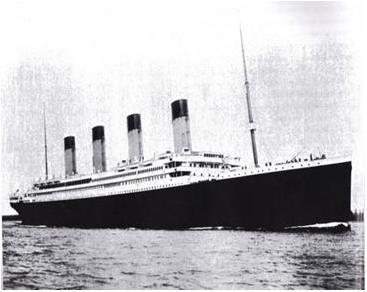
The terms “cruise ship” and “ocean liner” are often used interchangeably. However, while both are types of passenger ships, there is a difference.
An ocean liner is a ship designed to transport passengers from point A to point B. The classic example of such a voyage would be a transatlantic crossing from Europe to America. Because a ship could encounter any type of weather on such a voyage, an ocean liner must be built strongly, using a great deal of steel in the hull. Their bows are long and tapered to allow them to cut through the waves. They have a deep draft in order to be more stable. In addition, in order to make the voyage within a reasonable time, they are built so as to be able to go fast.
Classic examples of ocean liners are the SS United States, the Normandie and the Queen Elizabeth 2. The only ship built as an ocean liner in recent years is Cunard’s Queen Mary 2.
Cruise ships are built for the purpose of taking passengers on a journey that begins and ends in the same port. A classic example of such a voyage is a Caribbean cruise that begins and ends in Miami, Florida.
When the modern cruise industry first started to emerge, most cruise ships were ocean liners that had been retired from the transatlantic run because that market had been lost to the jet airliner. Indeed, Carnival Cruise Lines first ship the Mardi Gras was the former ocean liner Empress of Canada. NCL’s Norway was the former France. Holland America’s Rotterdam was built as an ocean liner.
In the early1970s, ship designers began to realize that a ship did not have to be built like an ocean liner in order to do such a voyage. Because the weather was likely to be sunny and fine, the ship did not have to be built as strongly as an ocean liner. This would result in savings in building the ship and in running it. Since the waves would not be as high, the bow could be shorter and wider. As a result, the ship’s shape could be more box-like thereby enabling it to carry more passengers. Because the sea conditions would be less severe, the draft could be reduced. This would allow the ships to dock in more ports. Finally, since such cruises would be leisurely voyages, the ships did not need to be built to go fast. This would produce fuel cost savings.
Such considerations led the cruise lines to depart from the classic ocean liner design and build ships that were different from what had gone before. The stereotypical cruise ship of the last part of the 20th Century was blunt-bowed, box-like and slow. It also used more glass and aluminum and less steel in its structure.
In recent years, however, the distinction is starting to blur. Cruising is no longer limited to the calm waters of the Caribbean and the Mediterranean. Consequently, cruise ships have to be able to handle much more difficult conditions. Thus, cruise ships are taking on ocean liner characteristics, becoming stronger, faster and more hydrodynamic. Indeed, Royal Caribbean’s Radiance-class ships and NCL’s Jewel-class ships can achieve speeds that rival some the speeds of some classic ocean liners.












Recommended Comments
Join the conversation
You can post now and register later. If you have an account, sign in now to post with your account.